Air Operations, CBI
BURMA
- 9 10th Air Force P-47s attack stores and a military camp at Naba.
- 5 P-47s attack a supply dump and bridge near Wanling.
- 4 P-47s attack Japanese Army troops and supplies near Nansiaung.
- A 2nd Air Commando Group P-47 and a 459th Fighter Squadron P-38 each down a Ki-43 'Oscar' fighter over Rangoon between 1425 and 1515 hours.
CHINA
- 18 341st Medium Bomb Group B-25s attack port facilities and storage areas at Samshui and the town area at Kweiping.
- 28 14th Air Force P-51s and P-40s attack Samshui.
- 77 P-51s and P-40s attack numerous targets in east-central and southeastern China and northern French Indochina.
- A 118th Tactical Reconnaissance Squadron P-51 downs a Ki-44 'Tojo' fighter during an afternoon engagement over Canton.
[  | |   ] ]
Air Operations, East Indies FEAF B-25s attack the town area at Amboina Town.
[  | |   ] ]
Air Operations, Europe
US 9th AIR FORCE
FRANCE:
- In order to forestall a German plan to flood the Seille River valley, P-47 fighter-bombers of the XIX TAC's 362nd Fighter Group breach a dam at Dieuze in order to release the waters of the Etang de Lindre.
GERMANY:
- 9th Air Force fighter pilots down 20 Luftwaffe fighters over Germany in three separate air actions at about 0910, 1450, and 1540 hours.
NETHERLANDS:
- 9th Bomb Division bombers attack two rail bridges, but other scheduled attacks are aborted due to bad weather.
US 12th AIR FORCE
ITALY:
- 12th Air Force B-25s and B-26s mount a maximum effort against 12 bridges and railroad fills in the Po River valley.
- XXII TAC P-47s attack communications targets, tactical targets, supply dumps, and troop concentrations in support of the US 5th Army's drive to take Bologna.
- During the night, XXII TAC A-20s attack targets of opportunity north of the battle area.
US 15th AIR FORCE
AUSTRIA:
- 15th Air Force B-24s attack a marshalling yard at Innsbruck.
CZECHOSLOVAKIA:
- 15th Air Force B-17s attack an oil refinery at Brux.
GERMANY:
- 15th Air Force B-17s and B-24s attack the Bad Aibling Airdrome, an oil-storage facility at Regensburg, and a marshalling yard at Rosenheim.
ITALY:
- 15ht Air Force heavy bombers attack an armaments factory, a motor transport factory, and an ordnance plant at Milan.
[  | |   ] ]
Air Operations, Philippines - The US 6th Army begins the liberation of the Philippines at Leyte with landings between Tacloban and Dulag, on the island’s east coast. Task Group 77.4 escort-carrier aircraft provide 305 direct-support sorties throughout the day for 3 US 6th Army landing forces. Carrier aircraft from Task Group 38.1 and Task Group 38.4 support US 6th Army ground forces and sweep airfields on Cebu, Leyte, northern Mindanao, Negros, and Panay. Aircraft from Task Group 38.2 and Task Group 38.3 cover the US invasion fleet. Throughout the daylight hours, escort carrier aircraft maintain a rotating on-call strike force of 16 fighters and 6 TBMs, plus an additional 8 fighters and 6 TBMs for an hour before and after H hour.
- 46 V Bomber Command B-24s attack a Japanese Army headquarters in Davao, Mindanao.
- 12 38th Medium Bomb Group B-25s attack the Dumaguete airfield on Negros.
- 12 8th Fighter Group P-38s strafe trucks and barges in southern Mindanao.
- 16 35th Fighter Group P-47s strafe the Bacolod and Fabrica airfields on Negros.
- Several US suface warships are damaged in air attacks during the day. The USS Sangamon is slightly damaged by a bomb in a surprise attack by 3 A6M Zeros beginning at 0820 hours.
- 2 VC-80 FMs down a D4Y 'Judy' dive bomber over the Biliran Strait at 0745 hours.
- 2 VF-35 F6Fs down an A6M Zero over Task Unit 77.4.1 at 0830 hours.
- 2 VF-51 F6s down a D4Y 'Judy' dive bomber at sea at 0840 hours.
[  | |   ] ]
Britain, Planning Churchill arrives in Cairo to discuss strategy in Southeast Asia with Adm Lord Mountbatten
[  ] ]
Eastern Front In Hungary, the 2nd Ukraine Front, supported by Rumanian and Bulgarian troops, drive the Germans out of Debrecen. In Yugoslavia, the 46th and 57th Armies of the 3rd Ukraine Front with Tito's Partisans complete the liberation of Belgrade. The Partisans also take Dubrovnik on the Adriatic coast while in Hungary Debrecen is taken by the Russians.
HUNGARY
Debrecen falls to the Soviet 6th Tank Army and Group Pliev.
YUGOSLAVIA
The Belgrade garrison is wiped out: 15,000 are dead and 9,000 made prisoner. Soviet losses are 4,400 killed and 14,500 wounded. Yugoslav losses are unknown.[MORE]
[  | |   ] ]
Italy The 4th and 46th Div, British V Corps, enter Cesena. In the central sector, south of Bologna, the South African 6th Arm Div, serving with 5th Army, repulses a German counterattack by units of the XIV Panzer Corps against the Allied positions on Monte Salvaro, and reaches the slopes of Monte Alcino. On the right flank of the US II Corps the 88th Div advances as far as Farneto. There is a lull in the other sectors.
In the eastern sector of the line the 4th Div reaches and fords the Cesano River beside the bridge, which the Germans have blown up. On the Adriatic coast the Allies occupy Cesenatico after the withdrawal of the units of the German LXXVI Panzer Corps.
[  | |   ] ]
Occupied Yugoslavia Belgrade is captured by Tito's Partisans and Russian forces.
[  | |  ] ]
Pacific The US submarine Hammerhead (SS-364) sinks the Japanese transport Oyo Maru (5458t) and army cargo ship Ugo Maru (3684t) off Borneo.
[  | |   ] ]
Palau Islands Despite Maj-Gen William H. Rupertus's protests that his marines are capable of finishing the fight at Peleliu, both Maj-Gen Roy S. Geiger and Adm Chester Nimitz order Rupertus to withdraw his division from the island and turn over the battle to the 81st Infantry Division. When B Company of the 1st Battalion of the 323rd Infantry Regiment relieves the 1st Battalion of the 7th Marines at the Umurbrogol Pocket, B Company's infantrymen are able to replace the marine battalion man-for-man on the line.
[  | |  ] ]
Philippines At 10:05a.m. there are US landings on the east coast of Leyte. All the escort and fleet carriers involved in the preparatory attacks and 5th Air Force provide air support. The landing ships and the bombardment and escort groups are from Vice-Adm T. C. Kinkaid's 7th Fleet and the troops landed are from Walter Krueger's 6th Army. A deadly naval fire begins at 6:00a.m. and is broken off at 8:50a.m. while US aircraft drop hundreds of tons of bombs in the area of Dulag; then the landings take place on a front of 16 miles on 2 separate beaches. 4 divs from 2 corps are landed. Franklin C. Sibert's X Corps, 1st Cav and 24th Inf Divs, land slightly to the south of Tacloban and John R. Hodge's XXIV Corps, 96th and 7th Divs, around Dulag. Each corps has fire support from destroyers. The cruiser Honolulu (CL-48) is badly damaged by aerial torpedo in these operations. Damaged by coastal batteries are the destroyer Bennion (DD-662) and LST-452. There is little fighting on the beaches as the defending Japanese 16th Div soon retires to prepared positions inland to await reinforcements. The Americans are, therefore, able to take Tacloban Airfield but cannot link the beachheads of the 2 corps which are still 10 miles apart. By nightfall 132,000 men are ashore.
Gen MacArthur, who is in Supreme Command, lands a few hours after the assault troops and broadcasts to the Philippine people recalling his famous promise, 'I shall return.' He is accompanied by his Chief of Staff Gen Richard K. Sutherland and the new President of the Philippines, Sergio Osmena, the successor to the vanished(?) Manuel Quezon, with many senior officers. Using a small radio transmitter, MacArthur solemnly addresses the Filipino people, reminding them how he has kept the promise he made two and a half years before and inviting them to collaborate with the liberators.
To man the whole of the Philippines the Japanese have deployed 260,000 men under the command of Marshal Count Hisaichi Terauchi. On Leyte the defense is in the hands of the 16th, 26th, 30th and 102nd Divisions of the 35th Army, commanded by Gen Tomoyoku Yamashita, the conqueror of Malaysia and Singapore.
The Japanese have set in train a massive fleet operation, SHO-GO, to counter the American landings. A carrier force commanded by Adm Jisaburo Ozawa leaves Japan while other units are assembling at Brunei in North Borneo. (See October 23 for the Japanese plan and the composition of forces.)
[  | |   ] ]
United States, Home Front Explosions at a natural gas storage plant in Cleveland, Ohio kills 121 people.
[  | |   ] ]
Western Front The British I Corps, 1st Canadian Army, begins an offensive driving north from northeast of Antwerp in the direction of the road joining Bergen-op-Zoom, about 20 miles northwest of Antwerp, with Tilburg, committing all 3 divisions, the 4th Arm on the left, the 49th in the center and the Polish 1st Arm Div on the right.
The 26th Inf Regt of 1st Div, VII Corps, presses back the German defenders in the southern suburbs of Aachen.
At Marseilles in the US 7th Army sector, 2 more American divisions land, the 100th and the 103rd. The American 3rd Div, VI Corps, makes for St Diè, northeast of Bruyères, with the 7th Inf Regt.
In the area opposite Patton's 3rd Army there is extensive flooding in the German rear after the 19th TAF have breached the dam at Dieuze.
[  | |   ] ]
Images from October 20, 1944
Men and Equipment on Leyte Beachhead
|
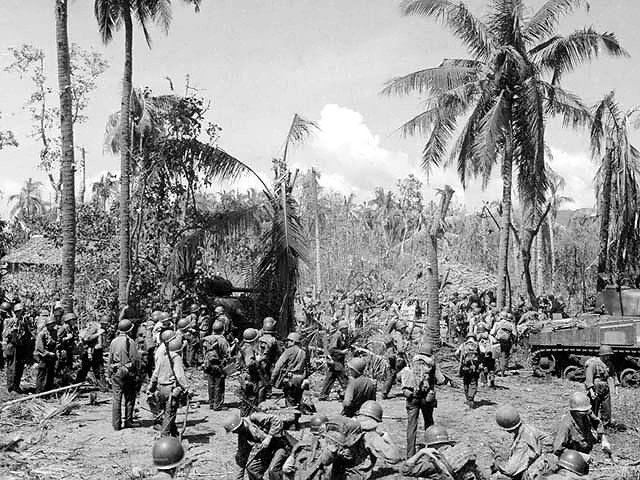 |
|
Advancing Toward San Jose
|
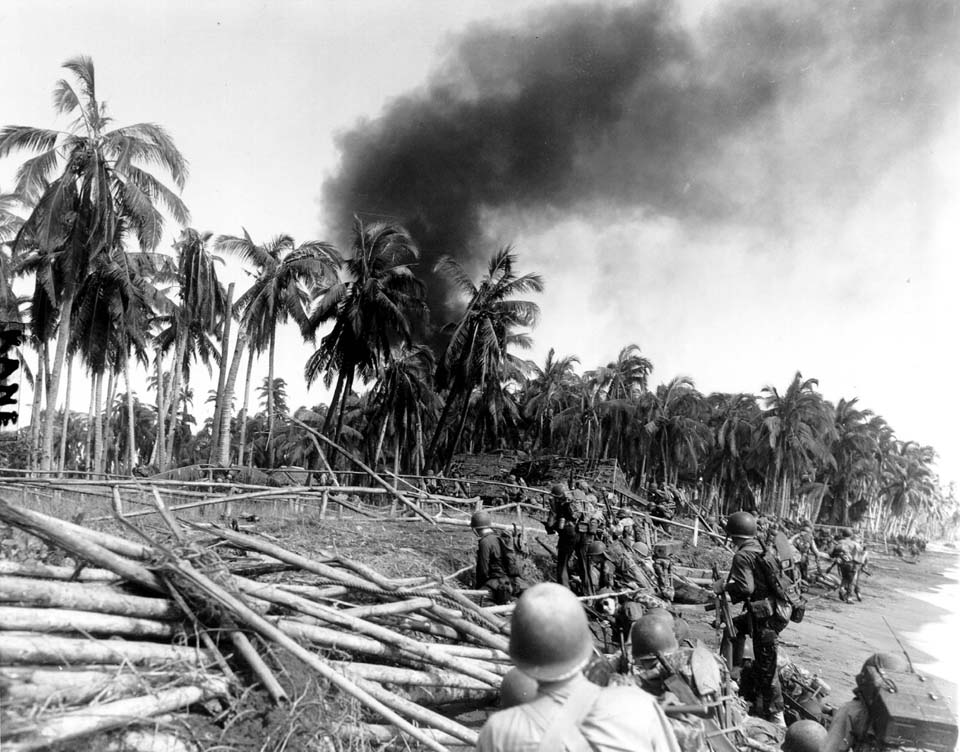 |
|
Landing Barges Heading for the Beaches
|
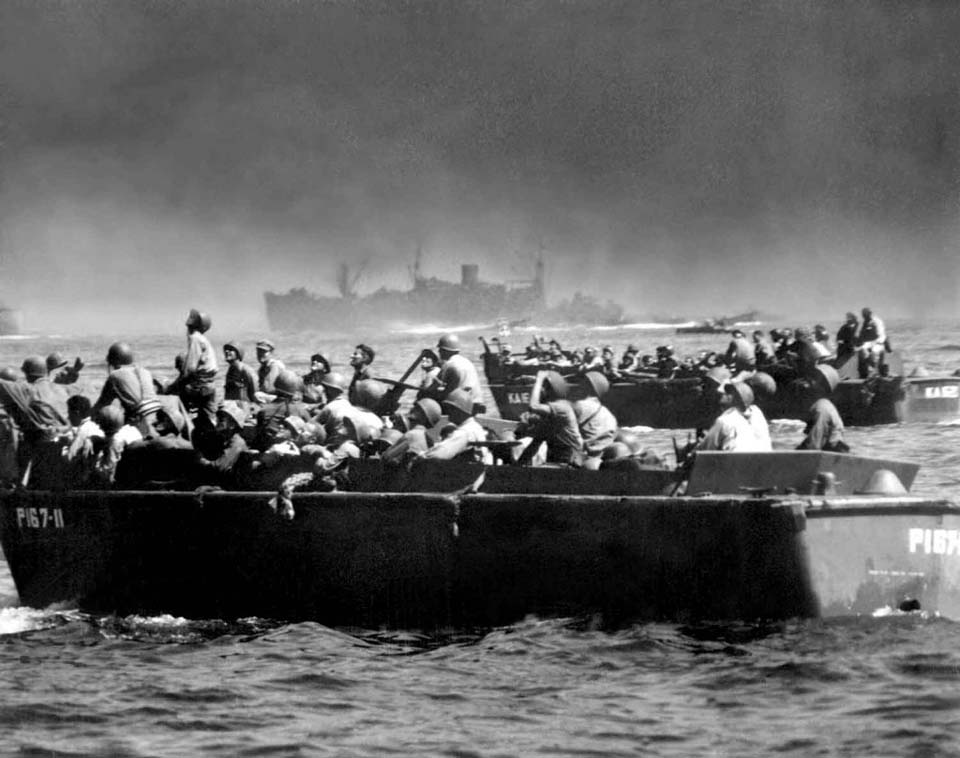 |
|
MacArthur Making His Return
|
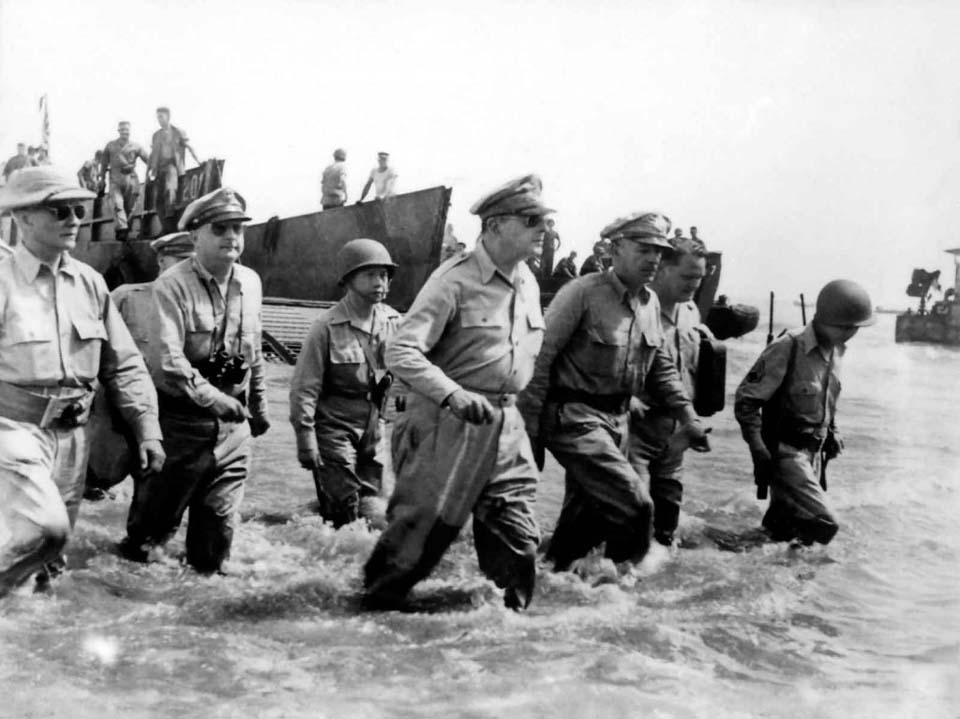 |
|
Unloading Men and Equipment on a Beachhead
|
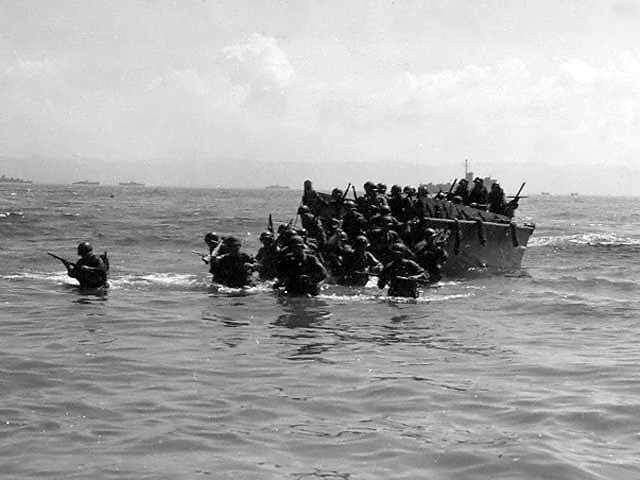 |
|
Refueling a PT Boat
|
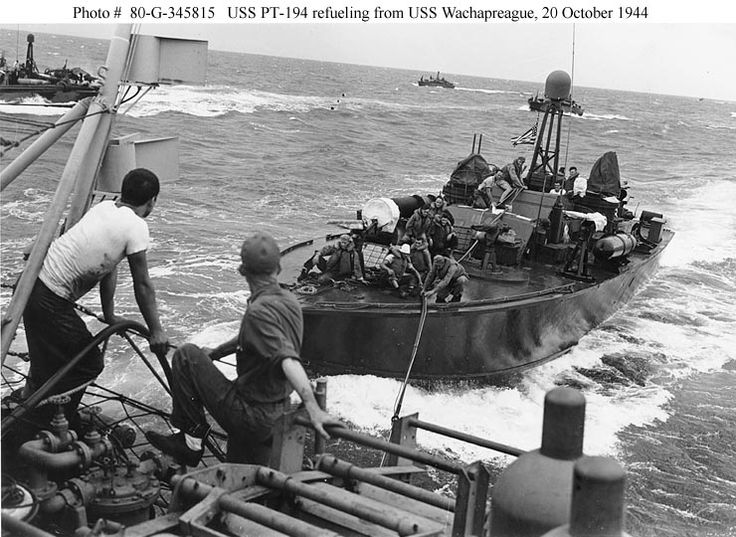 |
|
Another View of MacArthur Coming Ashore
|
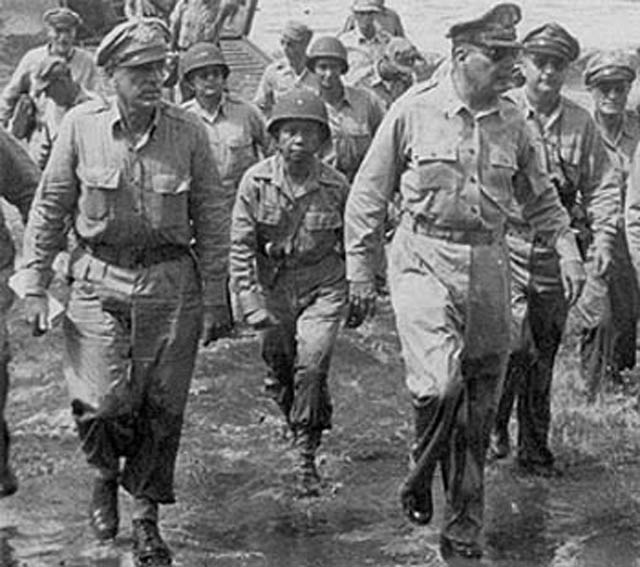 |
|
Smoke from Naval Shell Fire
|
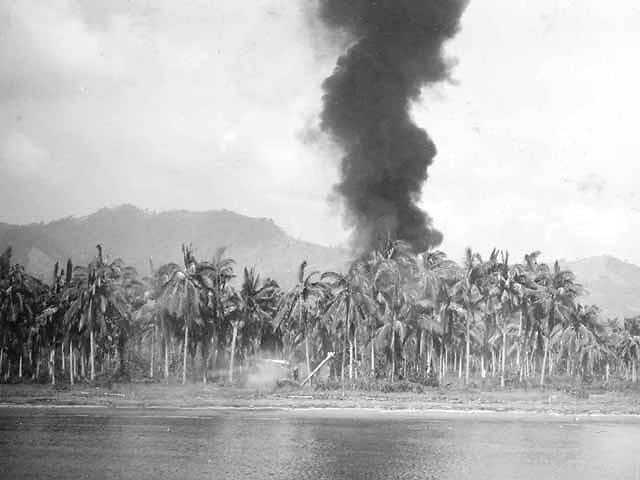 |
|
LCMs Nearing the Beach
|
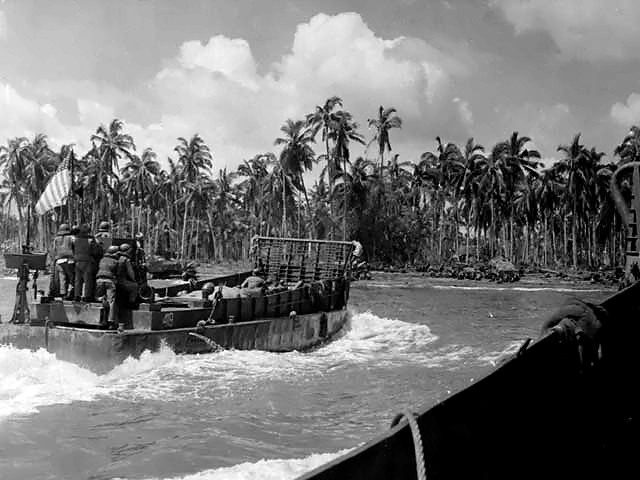 |
|
Troops Storm Ashore
|
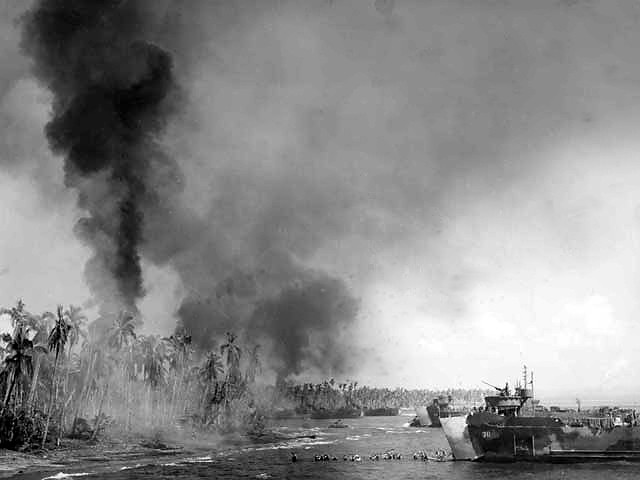 |
|
Landing Craft Landing Cargo
|
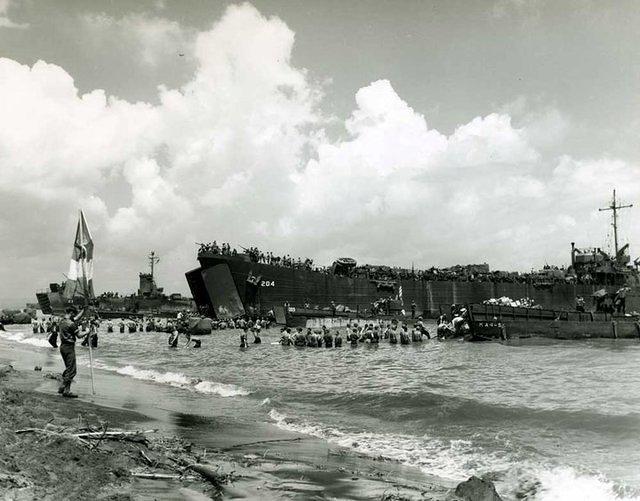 |
|
'Avenger' Flying Over the Beaches
|
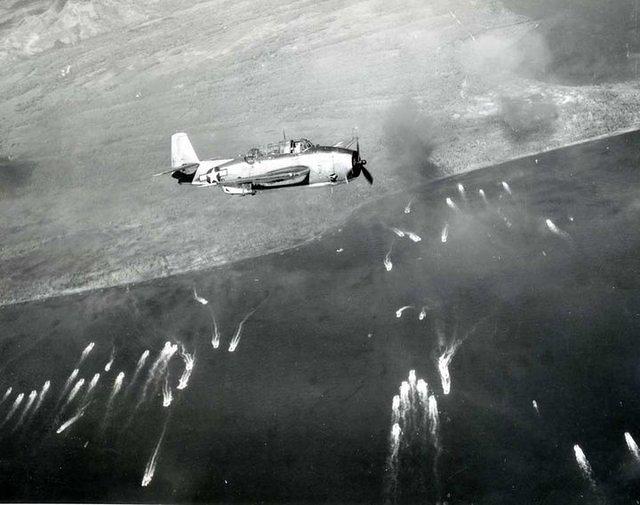 |
|
5”/38 Battery of the Pennsylvania
|
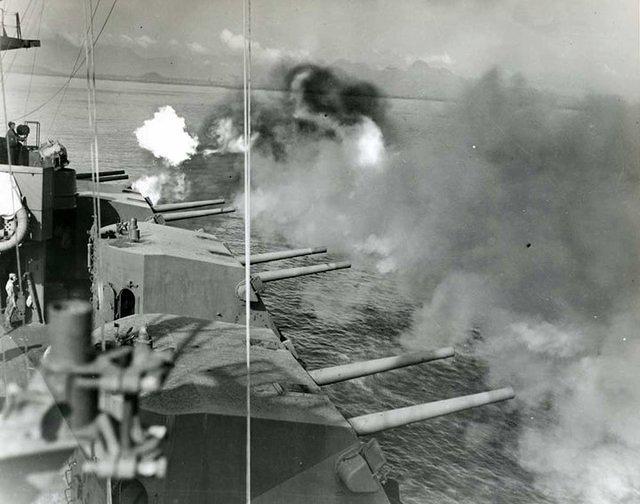 |
|
14-in Guns of Pennsylvania Bombarding Leyte
|
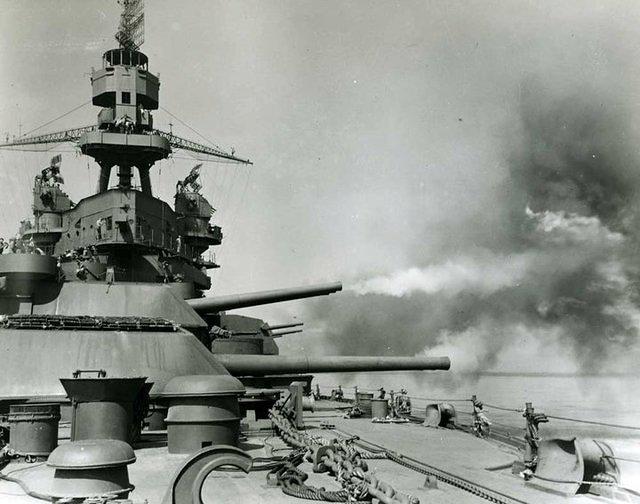 |
|
Fires Started by Pre-Invasion Bombardment
|
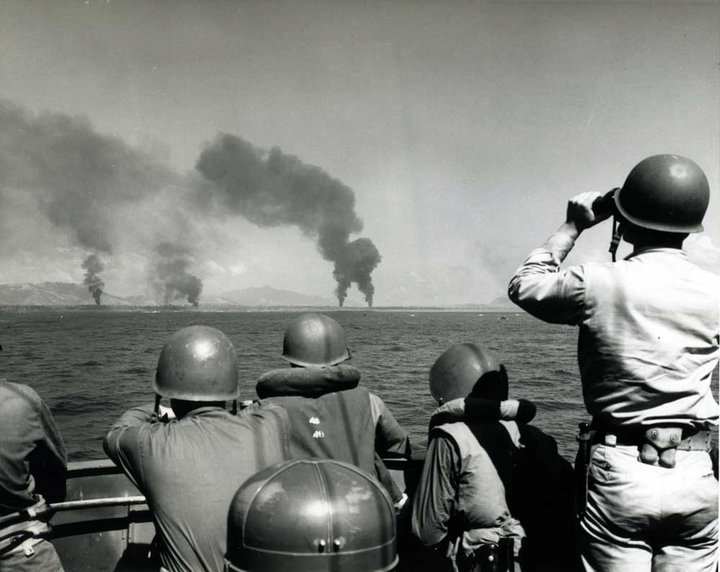 |
|
Landing Craft Running for Shore
|
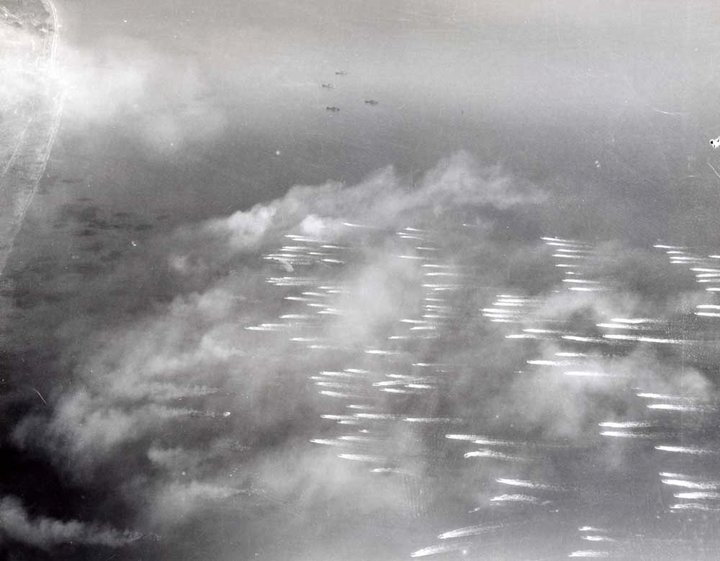 |
|
|















